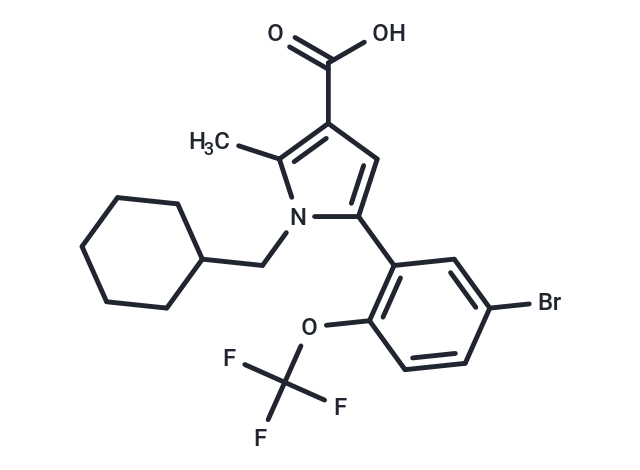Shopping Cart
Remove All Your shopping cart is currently empty
Your shopping cart is currently empty
TPC2-A1-P is a membrane-permeable two-pore channel 2 (TPC2) agonist that differentially activates two-pore channel 2 (TPC2) and mimics the activation of TPC2 with NAADP and PIP(2). TPC2-A1-P can be used to study neurodegenerative lysosomal storage diseases.

| Pack Size | Price | USA Warehouse | Global Warehouse | Quantity |
|---|---|---|---|---|
| 1 mg | $98 | In Stock | In Stock | |
| 5 mg | $249 | In Stock | In Stock | |
| 10 mg | $415 | In Stock | In Stock | |
| 25 mg | $789 | - | In Stock | |
| 50 mg | $1,280 | - | In Stock | |
| 100 mg | $1,950 | - | In Stock | |
| 1 mL x 10 mM (in DMSO) | $252 | - | In Stock |
| Description | TPC2-A1-P is a membrane-permeable two-pore channel 2 (TPC2) agonist that differentially activates two-pore channel 2 (TPC2) and mimics the activation of TPC2 with NAADP and PIP(2). TPC2-A1-P can be used to study neurodegenerative lysosomal storage diseases. |
| Targets&IC50 | TPC2:50 μM (EC50) |
| In vitro | METHODS: Cell lines stably expressing TPC2L11A/L12A were screened with natural and synthetic small molecule libraries using a FLIPR-based Ca2+ assay, and after screening, the structure and activity of TPC2-A1-P (0.1-100 μM) and TPC2-A1-N (T36805) were confirmed by independent chemical synthesis and subsequent retesting. RESULTS: Plateau-responsive full-concentration effect relationships indicated EC50 values of 10.5 and 7.8 μM for TPC2-A1-P and TPC2-A1-N, respectively, and confirmed their Ca2+ solubility in intact cells. [1] |
| Molecular Weight | 460.29 |
| Formula | C20H21BrF3NO3 |
| Cas No. | 2804595-86-4 |
| Smiles | O=C(O)C=1C=C(C=2C=C(Br)C=CC2OC(F)(F)F)N(C1C)CC3CCCCC3 |
| Storage | keep away from direct sunlight,store under nitrogen | Powder: -20°C for 3 years | In solvent: -80°C for 1 year | Shipping with blue ice/Shipping at ambient temperature. | ||||||||||||||||||||||||||||||
| Solubility Information | DMSO: 40 mg/mL (86.9 mM), Sonication is recommended. | ||||||||||||||||||||||||||||||
| In Vivo Formulation | 10% DMSO+90% Corn Oil: 2 mg/mL (4.35 mM), Sonication is recommeded. Please add the solvents sequentially, clarifying the solution as much as possible before adding the next one. Dissolve by heating and/or sonication if necessary. Working solution is recommended to be prepared and used immediately. The formulation provided above is for reference purposes only. In vivo formulations may vary and should be modified based on specific experimental conditions. | ||||||||||||||||||||||||||||||
Solution Preparation Table | |||||||||||||||||||||||||||||||
DMSO
| |||||||||||||||||||||||||||||||
| Size | Quantity | Unit Price | Amount | Operation |
|---|

Copyright © 2015-2026 TargetMol Chemicals Inc. All Rights Reserved.